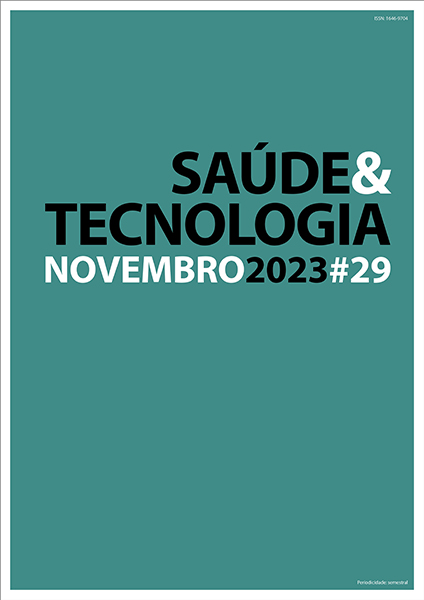Foveal avascular zone: differences between two different acquisition protocols
DOI:
https://doi.org/10.25758/set.603Keywords:
Foveal avascular zone, Optical coherence tomography angiography, Superficial vascular complex, Deep vascular complex, Diabetic retinopathyAbstract
OCT-A is an exam that allows visualization of the retinal and choroidal vascularization as well as the three-dimensional visualization of the vascular plexuses at different depths, providing functional information about the blood flow in the vessels, and areas of non-perfusion or neovascularization. The foveal avascular zone corresponds to an area deprived of capillaries in the foveolar region that can be detected and measured using OCT-A. When performing the exam, it is possible to choose between two methods with different resolution and acquisition times, so it is important to assess whether the measurements are comparable between methods. The objective of this study was to see if there are differences in the measurement of the foveal avascular zone between two different OCT-A scanning protocols. The conducted study was a case-control cross-sectional study. The sample consisted of 26 participants with diabetes mellitus. The instrument used was the SD-OCT HRA+OCT SPECTRALIS Heidelberg Engineering. The patient assessment consisted of collecting 10° x 10° high-resolution and 20° x 20° high-speed OCT-A scans. These were manually measured by two observers, who each took two measurements of the foveal avascular zone of each scan (high-speed and high-resolution) in each complex (superficial and deep). Statistical analysis was performed using the SPSS program. There were no statistically significant differences between the different measurements, and it can be stated that the evaluation of the two protocols is repeatable and reproducible, with good agreement between the methods. However, the use of both retinal plexuses together to evaluate the foveal avascular zone may be more appropriate.
Downloads
References
Gutierrez-Benitez L, Palomino Y, Casas N, Asaad M. Automated measurement of the foveal avascular zone in healthy eyes on Heidelberg spectralis optical coherence tomography angiography. Arch Soc Esp Oftalmol. 2022;97(8):432-42.
Reis F, editor. Meios complementares de diagnóstico em oftalmologia [Internet]. Lisboa: Sociedade Portuguesa de Oftalmologia; 2020. Available from: https://thea.pt/sites/default/files/documentos/monografia_sp0_2020_versao_web.pdf
Pilotto E, Frizziero L, Crepaldi A, Della Dora E, Deganello D, Longhin E, et al. Repeatability and reproducibility of foveal avascular zone area measurement on normal eyes by different optical coherence tomography angiography instruments. Ophthalmic Res. 2018;59(4):206-11.
Cheung CM, Fawzi A, Teo KY, Fukuyama H, Sen S, Tsai WS, et al. Diabetic macular ischaemia: a new therapeutic target? Prog Retin Eye Res. 2022;89:101033.
Magera L, Krásný J, Pluhovský P, Holubová L. Changes of the foveal avascular zone and macular microvasculature within the framework of OCT angiography examination in young patients with type 1 diabetes (pilot study). Cesk Slov Oftalmol. 2020;76(3):111-7.
Campbell JP, Zhang M, Hwang TS, Bailey ST, Wilson DJ, Jia Y, et al. Detailed vascular anatomy of the human retina by projection-resolved optical coherence tomography angiography. Sci Rep. 2017;7:42201.
Karabulut M, Karalezli A, Karabulut S, Sül S. Retinal microvascular differences in type 2 diabetes without clinically apparent retinopathy: an optical coherence tomography angiography study. SDU Med Fac J. 2022;29(1):7-13.
Murakami T, Nishijima K, Sakamoto A, Ota M, Horii T, Yoshimura N. Foveal cystoid spaces are associated with enlarged foveal avascular zone and microaneurysms in diabetic macular edema. Ophthalmology. 2011;118(2):359-67.
Rocholz R, Teussink MM, Dolz-Marco R, Holzhey C, Dechent JF, Tafreshi A, et al. SPECTRALIS optical coherence tomography angiography (OCTA): principles and clinical applications [homepage]. Heidelberg Engineering Academy; 2018. Available from: https://academy.heidelbergengineering.com/course/view.php?id=505&he_locale=en&he_country=PT&he_site=int
Corvi F, Corradetti G, Parrulli S, Pace L, Staurenghi G, Sadda SR. Comparison and repeatability of high resolution and high speed scans from Spectralis optical coherence tomography angiography. Transl Vis Sci Technol. 2020;9(10):29.
Camacho P, Ribeiro E, Pereira B, Varandas T, Nascimento J, Henriques J, et al. DNA methyltransferase expression (DNMT1, DNMT3a and DNMT3b) as a potential biomarker for anti-VEGF diabetic macular edema response. Eur J Ophthalmol. 2023;33(6):2267-74.
Bobak CA, Barr PJ, O’Malley AJ. Estimation of an inter-rater intra-class correlation coefficient that overcomes common assumption violations in the assessment of health measurement scales. BMC Med Res Methodol. 2018;18(1):93.
Coscas F, Sellam A, Glacet-Bernard A, Jung C, Goudot M, Miere A, et al. Normative data for vascular density in superficial and deep capillary plexuses of healthy adults assessed by optical coherence tomography angiography. Invest Ophthalmol Vis Sci. 2016;57(9):OCT211-23.
Hormel TT, Jia Y, Jian Y, Hwang TS, Bailey ST, Pennesi ME, et al. Plexus-specific retinal vascular anatomy and pathologies as seen by projection-resolved optical coherence tomographic angiography. Prog Retin Eye Res. 2021;80:100878.
Downloads
Published
Issue
Section
License
Copyright (c) 2023 Saúde & Tecnologia

This work is licensed under a Creative Commons Attribution-NonCommercial-NoDerivatives 4.0 International License.
The journal Saúde & Tecnologia offers immediate free access to its content, following the principle that making scientific knowledge available to the public free of charge provides greater worldwide democratization of knowledge.
The journal Saúde & Tecnologia does not charge authors any submission or article processing charges (APC).
All content is licensed under a Creative Commons CC-BY-NC-ND license. Authors have the right to: reproduce their work in physical or digital form for personal, professional, or teaching use, but not for commercial use (including the sale of the right to access the article); deposit on their website, that of their institution or in a repository an exact copy in electronic format of the article published by Saúde & Tecnologia, provided that reference is made to its publication in Saúde & Tecnologia and its content (including symbols identifying the journal) is not altered; publish in a book of which they are authors or editors the total or partial content of the manuscript, provided that reference is made to its publication in Saúde & Tecnologia.







